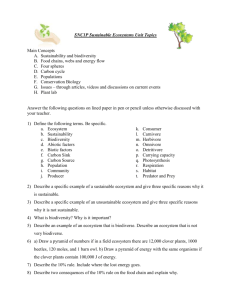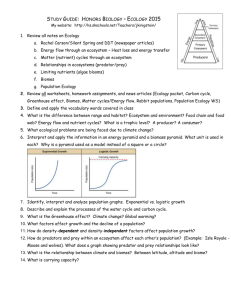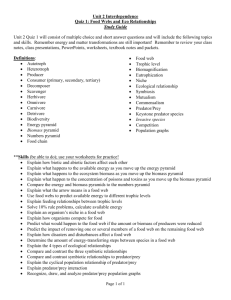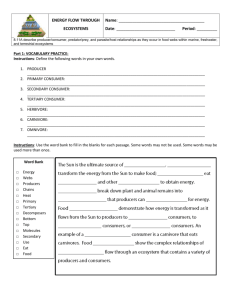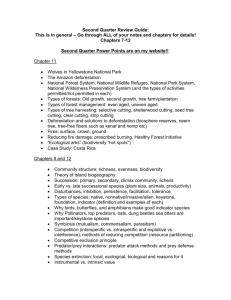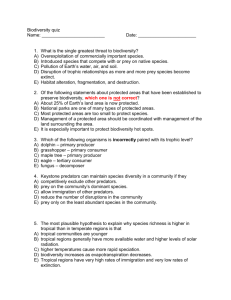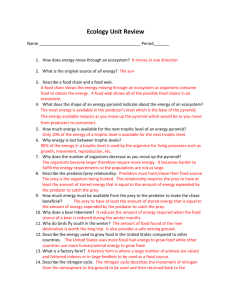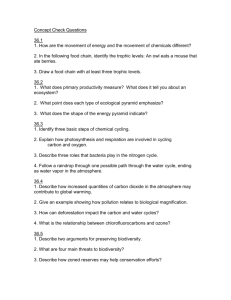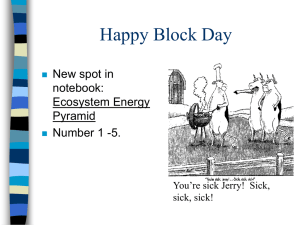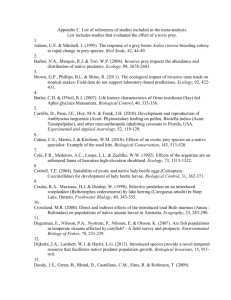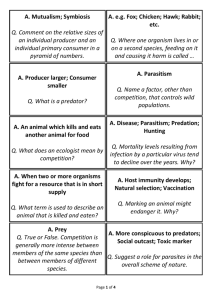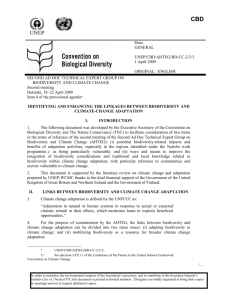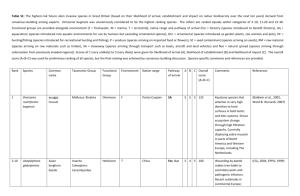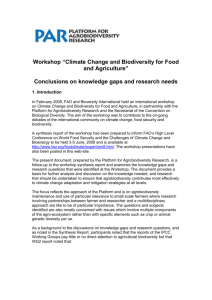Genetics & Ecology
advertisement
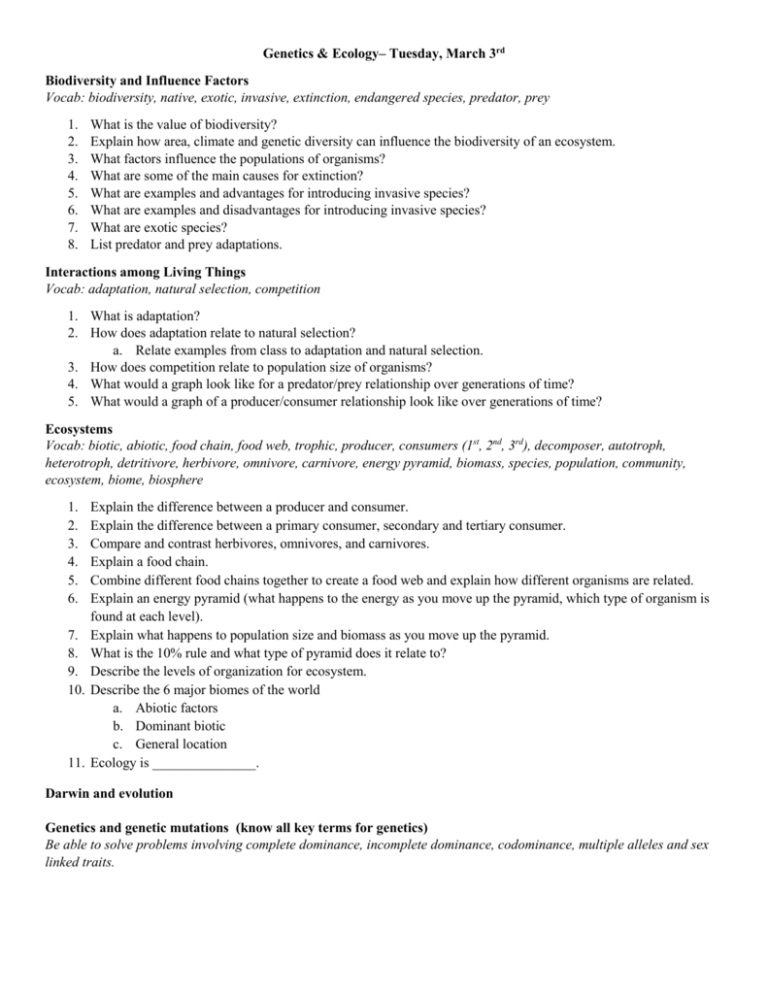
Genetics & Ecology– Tuesday, March 3rd Biodiversity and Influence Factors Vocab: biodiversity, native, exotic, invasive, extinction, endangered species, predator, prey 1. 2. 3. 4. 5. 6. 7. 8. What is the value of biodiversity? Explain how area, climate and genetic diversity can influence the biodiversity of an ecosystem. What factors influence the populations of organisms? What are some of the main causes for extinction? What are examples and advantages for introducing invasive species? What are examples and disadvantages for introducing invasive species? What are exotic species? List predator and prey adaptations. Interactions among Living Things Vocab: adaptation, natural selection, competition 1. What is adaptation? 2. How does adaptation relate to natural selection? a. Relate examples from class to adaptation and natural selection. 3. How does competition relate to population size of organisms? 4. What would a graph look like for a predator/prey relationship over generations of time? 5. What would a graph of a producer/consumer relationship look like over generations of time? Ecosystems Vocab: biotic, abiotic, food chain, food web, trophic, producer, consumers (1st, 2nd, 3rd), decomposer, autotroph, heterotroph, detritivore, herbivore, omnivore, carnivore, energy pyramid, biomass, species, population, community, ecosystem, biome, biosphere 1. 2. 3. 4. 5. 6. 7. 8. 9. 10. 11. Explain the difference between a producer and consumer. Explain the difference between a primary consumer, secondary and tertiary consumer. Compare and contrast herbivores, omnivores, and carnivores. Explain a food chain. Combine different food chains together to create a food web and explain how different organisms are related. Explain an energy pyramid (what happens to the energy as you move up the pyramid, which type of organism is found at each level). Explain what happens to population size and biomass as you move up the pyramid. What is the 10% rule and what type of pyramid does it relate to? Describe the levels of organization for ecosystem. Describe the 6 major biomes of the world a. Abiotic factors b. Dominant biotic c. General location Ecology is _______________. Darwin and evolution Genetics and genetic mutations (know all key terms for genetics) Be able to solve problems involving complete dominance, incomplete dominance, codominance, multiple alleles and sex linked traits.

